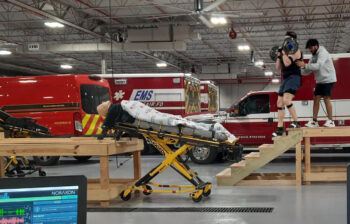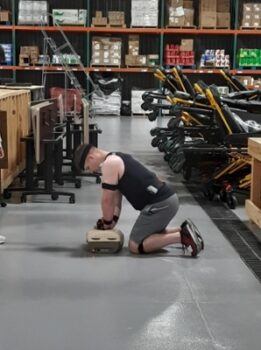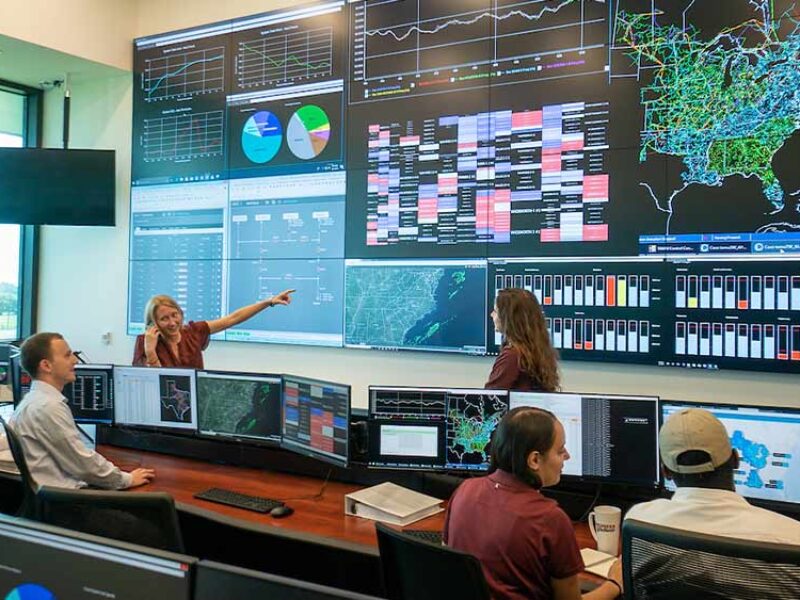Student Puts ‘Exoskeletons’ To The Test In Emergency Situations

Prevalent work-related injuries among emergency medical technicians (EMTs) are sprains and strains, most of which affect the hands and upper trunk, according to 2020 statistics from the Centers for Disease Control and Prevention. Devices such as exoskeletons, worn to enhance and support physical capabilities, can help reduce the rate of these injuries. However, integrating these devices into emergency response has challenges.
Oshin Tyagi, a doctoral student in the Wm Michael Barnes ’64 Department of Industrial and Systems Engineering at Texas A&M University, focuses her research on investigating the role of exoskeletons in health care environments. With support from a $10,000 grant from the Southwest Center for Occupational and Environmental Health Pilot Projects Research Training Program, a National Institute for Occupational Safety and Health Education and Research Center, she’s taking the final steps to begin conducting field research with EMTs in Houston.
Six months into her yearlong research grant, Tyagi said she’s excited about the project’s progress. The protocol for the study is in place, and along with pilot data collection, Tyagi said she recently received Institutional Review Board approval to conduct research with EMTs in Houston fire departments.
The team will use a back exoskeleton designed by HeroWear. The device, worn like a backpack, has an actuator that can turn on or off using a button near the wearer’s collarbone to engage the device’s mechanical systems. When turned on, the device applies pressure to a person’s back while bending, helping keep their back straight and offloading some of the activity from the back muscles.

Participants in Tyagi’s study include emergency medical technicians with Houston fire departments. Study participants will conduct tasks that include giving CPR, pushing a stretcher into and pulling it out of an ambulance, and climbing stairs with a heavy weight to simulate carrying patients and stretchers. They will also complete a series of standard box-lifting tasks used in research studies to examine the biomechanical benefits of exoskeletons.
“We will have the emergency workers do these basic tasks while wearing and not wearing an exoskeleton,” Tyagi said. “We will compare the two conditions to determine how effective exoskeleton use was. We will also collect biomechanical data, muscle activity data, and subjective evaluation of workload and usability to understand how well they adapt to the use of exoskeletons.”
From the anecdotal data she’s collected, EMTs gave feedback that the exoskeleton helped when carrying stretchers but gets in their way while performing some critical medical tasks, such as CPR. If the goal is for EMTs to integrate exoskeletons into their day-to-day work, Tyagi said it’s more complicated than giving an exoskeleton to them and telling them to use it.
“We would want them to be trained on it, and to be trained on it, they would have to know when to turn the exoskeleton on and when to turn the exoskeleton off,” Tyagi said. “I hope this will lead to information that will be valuable, not just in academia, but also for EMTs and firefighters to get a clearer picture of how viable these devices are as an ergonomic assistance to reduce physical demands.”
Tyagi thanked Chief Justin Reed and the Houston Cy-Fair Fire Department EMTs for their vital feedback.
One initial challenge Tyagi had was finding a team to support her in the large-scale project. She went through the Aggie Research Program and said she found a wonderful cross-disciplinary team of motivated undergraduate researchers willing to learn engineering research skills.
“I have performed a lot of studies, but beyond my dissertation project, I have not conceptualized use-inspired research projects from the ground up (i.e., securing extramural funding),” Tyagi said. “That was a fun experience. This was also the first time I managed a big team, which was challenging at first. I’m grateful for this experience because I learned to manage and supervise research rather than do research.”
The team hopes to submit their work for publication and plans to present at Texas A&M’s Student Research Week in March and the Houston Human Factors and Ergonomics Society symposium. Tyagi thanked her faculty advisor, Dr. Ranjana Mehta, associate professor in the department, for her guidance. Tyagi is part of Mehta’s Neuroergonomics Lab, where she also received project coordination support from Lindsey Brenner, the lab’s project manager. Tyagi said they helped her stay focused.
“You need to have a clear vision of what you want to do, when and why,” Tyagi said.” Sometimes you get distracted by many different things you want to try while managing your dissertation research in parallel. Knowing your project’s scope and sticking to it is important.”
Media contact: Amy Halbert, ahalbert@tamu.edu





